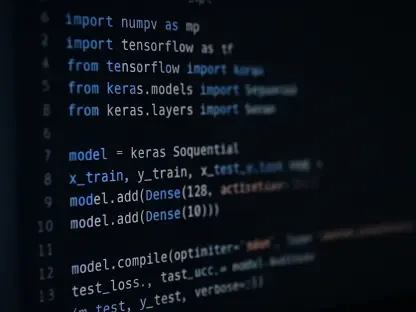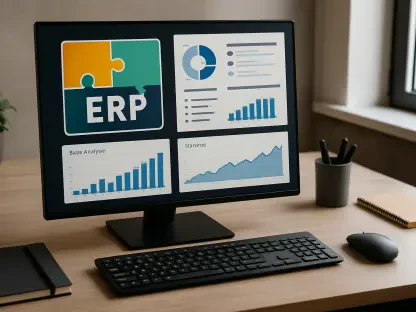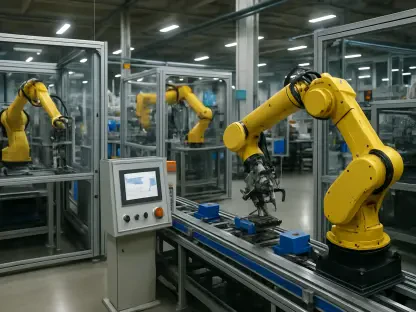Open-source software (OSS) holds immense significance in the modern technological landscape, serving as the backbone for various applications used by individuals, enterprises, and even governments. Despite this critical role, the sustainability of open-source projects remains a pressing issue. Many of the maintainers and contributors behind these essential projects receive little to no financial compensation for their work, leading to potential burnout and jeopardizing the long-term survival of OSS. This article delves into different models and methods that can ensure sustainable funding for open-source software, exploring corporate responsibility, community contributions, and government intervention.
The Challenges Facing Open Source Maintainers
The Disparity Between Usage and Contribution
Many large enterprises and organizations rely heavily on open-source software for their day-to-day operations. However, a significant disparity exists between the level of reliance on these projects and the contributions they receive in return. This reliance without reciprocation leads to financial and motivational challenges for those who maintain the software, often resulting in burnout. Open-source software, such as libraries, frameworks, and tools, is crucial for the development and maintenance of diverse technological systems. Still, the financial models supporting these initiatives lag far behind.
Maintainers frequently find themselves overwhelmed by the demands placed upon them, as they must continually update and secure their code. These high expectations, combined with minimal financial reward, create a challenging environment for sustained, quality craftsmanship in OSS. Given this context, it’s clear that more equitable solutions are needed to support these vital contributors. As the backbone of digital economies and technological progress, OSS projects deserve structured funding to match their critical importance. Such improvements would not only ensure better software but also fortify a community that thrives on innovation and collaborative growth.
The Reality of Maintainer Burnout
The lack of financial stability and significant workload leads many maintainers to experience burnout. Without sufficient income, maintainers often juggle their open-source responsibilities with other full-time jobs, further exacerbating stress and fatigue. If maintainer burnout continues unabated, it threatens the future health and viability of open-source projects globally. The mental and emotional toll on developers is profound, affecting their ability to innovate and sustain project momentum. As a result, the OSS community faces an existential risk where talent pools could dry up due to unsustainable working models.
Organizations must recognize the importance of preventing burnout not just for the sake of individual wellbeing but also for the security and quality of the software they depend on. This includes exploring various funding models that provide consistent and fair compensation to maintainers. Companies that rely on OSS should view their contributions not as charity but as investments in their infrastructure’s stability and enhancement. By doing so, they not only secure better software for themselves but also contribute to a healthier, more vibrant technological ecosystem.
Funding Models for Open Source
Direct Monetization
Direct monetization represents a straightforward approach where maintainers are compensated through premium services, consultations, or advanced features of their software. While this model has worked for some, many projects find it difficult to convert wide usage into paid services successfully. Open-source users often expect all aspects of the software to be free, making the transition to a paid model challenging. This expectation can create a disconnect between the user base and the maintainers’ need for financial sustainability, often resulting in inadequate funds for essential development and maintenance tasks.
Maintainers may struggle to balance offering valuable, free software and creating revenue streams viable enough to sustain them. Despite these challenges, some projects have managed to carve out successful niches through direct customer engagement and premium offerings. These projects demonstrate that with innovative business models, maintainers can indeed monetize their expertise and effort. However, broader industry acceptance and community support are critical to scaling such initiatives effectively. Only through a deeper appreciation and understanding of the value provided by OSS can these monetization models thrive.
Corporate Sponsorships
Another important funding avenue lies in corporate sponsorships. Through platforms like GitHub Sponsors, companies, and individuals can directly support maintainers financially. This system allows for a decentralized and community-driven funding approach, fostering a more sustainable OSS ecosystem. Corporate sponsorships have several benefits. They provide maintainers with regular income and recognize their contributions to essential projects. Employers can also support open-source work during work hours, showing a commitment to software integrity and giving back to the community. This, in turn, helps reduce the likelihood of maintainer burnout by providing reliable financial support and acknowledgment of their work.
A well-structured corporate sponsorship model not only benefits individual maintainers but also enriches the entire OSS landscape. It ensures a continuous cycle of innovation, maintenance, and improvement, driven by invested stakeholders who appreciate the long-term value of robust, open-source solutions. Companies, thus, have a vested interest in supporting OSS financially and logistically. By participating in sponsorship programs, they contribute to a sustainable ecosystem, ensuring the ongoing availability and reliability of the tools and systems fundamental to their operations.
The Role of Governments
Recognizing OSS as a Public Good
Governments can play a crucial role in sustaining open-source software by recognizing it as a public good worthy of financial support. This approach has historical precedents, akin to infrastructure projects or public services, where government funding ensures broad public access and maintenance. Public funding could ensure that critical OSS projects receive the necessary financial and human resources to continue thriving. Initiatives such as Germany’s Sovereign Tech Fund exemplify how government intervention can create supportive environments for open-source software, providing a model for other countries to follow. Such investments would benefit not just the software itself but also the wider community that relies on these indispensable tools.
Investing in OSS as a public good aligns with broader government goals of ensuring secure, resilient, and transparent technological systems. Governments utilize open-source software in various sectors, including healthcare, education, and transportation, making it a cornerstone of public service infrastructure. By directly supporting these projects, governments can ensure that the software remains up-to-date, secure, and responsive to public needs. This proactive approach can mitigate risks associated with outdated or insecure software, promoting a culture of continuous improvement and collaboration within the OSS community.
Implementing Public Funding Mechanisms
With government intervention, specific funding mechanisms can be implemented to support OSS. These can range from grants and subsidies to direct investment in foundational projects. By doing so, governments ensure sustained innovation and security in critical digital infrastructure. Public funding mechanisms must be transparent and structured to ensure that funds are allocated efficiently. Governments should also collaborate with existing foundations and stakeholder communities to understand the most pressing needs and identify priority projects for funding. This collaborative effort could pave the way for a more robust and secure open-source ecosystem.
Establishing transparent public funding mechanisms will not only provide financial stability for OSS projects but also inspire confidence in the broader community. It fosters a sense of shared responsibility among stakeholders, ensuring that open-source software continues to thrive and evolve. By aligning public funding initiatives with the goals and values of the OSS community, governments can create a nurturing environment for sustained innovation. This collaborative approach benefits not only the immediate stakeholders but also the broader public, who ultimately rely on these technologies for various aspects of daily life.
The Role of Non-Profit Foundations
Supporting Maintenance and Development
Non-profit foundations like the Apache Software Foundation and the Linux Foundation have been integral to sustaining key open-source projects. These organizations offer resources beyond direct financial support, including infrastructural aid, community-building efforts, and scholarship programs. These foundations help in reducing the financial burden on individual maintainers by providing grants and facilitating collaboration. By pooling resources and creating a supportive community, they ensure that critical OSS projects continue to grow and adapt to new challenges. As part of the funding ecosystem, non-profit foundations represent a coordinated approach to fostering long-term sustainability.
Foundations play a pivotal role in bridging gaps that other funding models might leave. They serve as custodians of the OSS ethos, ensuring that projects remain true to their open and collaborative roots. Through various initiatives, foundations not only provide financial assistance but also drive strategic growth, capacity building, and community engagement. Their efforts help maintain the quality and reliability of OSS projects, ensuring that maintainers can focus on innovation without being bogged down by financial uncertainties. By supporting ongoing education and community development, these foundations contribute to a thriving, interconnected, and resilient OSS ecosystem.
Fostering Community and Collaboration
In addition to financial support, non-profit foundations play a vital role in fostering a sense of community and collaboration within the OSS ecosystem. They organize conferences, workshops, and networking events that bring together maintainers, contributors, and users to share knowledge, best practices, and innovative ideas. These events create a platform for collaboration, enabling developers to work together on solving complex problems and advancing the state of open-source software. This collaborative spirit is essential for the long-term success and sustainability of OSS projects, as it encourages the sharing of resources, expertise, and support.
Creating such inclusive and interactive environments also helps in attracting new contributors and retaining existing ones. It fosters a sense of belonging and purpose, which can be incredibly motivating for maintainers who might otherwise feel isolated or undervalued. By investing in community-building efforts, non-profit foundations ensure that the OSS ecosystem remains dynamic, innovative, and resilient to challenges. This holistic approach to support—financial, educational, and communal—helps maintainers achieve a sustainable balance between their contributions and personal well-being, ensuring the ongoing success and growth of open-source projects.
Conclusion
Open-source software (OSS) plays a pivotal role in today’s tech world, acting as the backbone for countless applications utilized by individuals, businesses, and even governments. However, the sustainability of these open-source projects is a significant concern. Many of the dedicated maintainers and contributors behind these crucial projects receive little to no financial support, risking burnout and threatening the longevity of OSS. This article explores various strategies to secure sustainable funding for open-source software, emphasizing the importance of corporate responsibility, community contributions, and government involvement.
Corporate responsibility involves businesses recognizing the value they derive from OSS and contributing financially or through resources. Many enterprises benefit enormously from open-source technologies and should consider reinvesting in these projects to ensure their continuation. Community contributions are another vital element; by crowdfunding or encouraging donations, the larger user base can aid in sustaining these projects. Additionally, government intervention could provide grants or other financial assistance to foster the development and maintenance of OSS.
Ultimately, a multifaceted approach involving corporations, communities, and governments is essential to ensure the ongoing vitality and productivity of open-source software. By addressing the funding challenges, we can safeguard the future of this critical technological resource.









